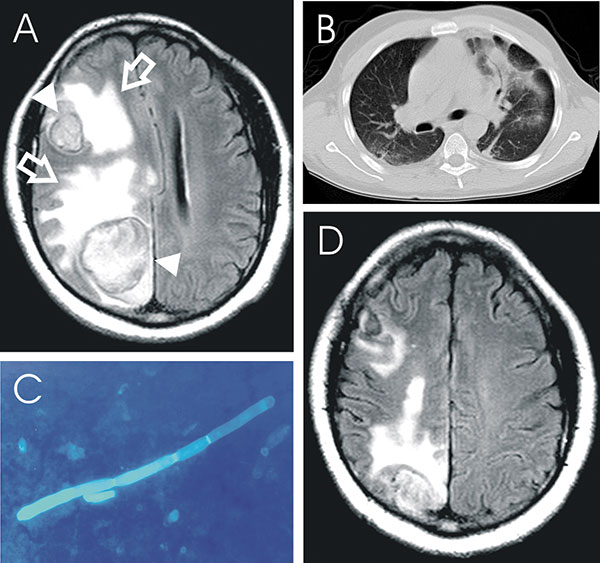Volume 11, Number 2—February 2005
Letter
Mycotic Brain Abscess Caused by Opportunistic Reptile Pathogen
Figure

Figure. Chrysosporium sp. brain abscess in an HIV-seropositive patient. A) T2-weighted magnetic resonance imaging (MRI) scan of the brain showing 2 large masses (triangle) surrounded by a ring of signal intensity and extensive perifocal edema (open arrows), global swelling of the right hemisphere, and a midline shift of 1.2 cm. B) Computed tomographic scan of the chest showing infiltration of the left and right lower segment. C) Mold mycelium in aspirate of brain abscess using calcoflour white stain. D) T2-weighted MRI scan of the brain performed 4 months after beginning of therapy.
Page created: April 28, 2011
Page updated: April 28, 2011
Page reviewed: April 28, 2011
The conclusions, findings, and opinions expressed by authors contributing to this journal do not necessarily reflect the official position of the U.S. Department of Health and Human Services, the Public Health Service, the Centers for Disease Control and Prevention, or the authors' affiliated institutions. Use of trade names is for identification only and does not imply endorsement by any of the groups named above.